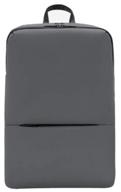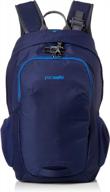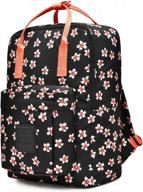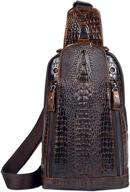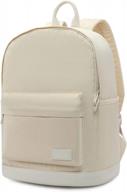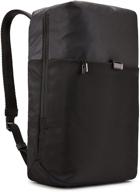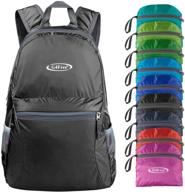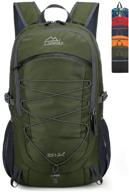How to pack the backpack efficiently?
Packing your backpack efficiently is crucial for comfort and minimizing strain on your back during hiking trips. Proper weight distribution and organization will make your hike easier. Follow these tips:
Assess your gear
Lay out everything you want to bring on the trip. Gather essentials like food, water, first aid kit, navigation tools, etc. Eliminate any non-essentials to reduce pack weight.
Use compartments
- Pack heavy items close to your back in the main compartment, like sleeping bag, tent, cooking supplies.
- Place medium weight items towards the middle, like clothing, tarps.
- Keep lighter items furthest from your back, like food, water, rain jacket.
Strategic loading
Load the backpack from bottom to top:
- Heavier items on the bottom, like sleeping gear or tent.
- Clothing and food in the middle.
- Lighter essentials like rain jacket near the top.
This concentrates most of the weight lower and closer to your back for stability.
Secure the load
Use compression straps on the sides and top to stabilize the load. Make sure to leave room for expandable items like water bottles in side pockets.
An efficiently packed backpack will distribute weight properly and make your trip more comfortable.
Similar products
How to clean the backpack?
Cleaning your backpack regularly helps extend its life and keep it looking fresh. The cleaning method depends on the backpack material.
Softshell Nylon/Polyester Backpacks
For basic cleaning:
- Shake out any loose dirt from pockets and compartments.
- Spot clean stains with a sponge, warm water and mild detergent.
- Rinse off suds with clean water.
- Air dry thoroughly before storing.
For a deeper clean:
- Empty out the backpack completely.
- Mix warm water and a few drops of mild detergent in a spray bottle. Spray down the entire backpack surface.
- Gently scrub with a soft brush to lift dirt from crevices.
- Rinse with clean water until suds are gone.
- Stuff the backpack with old towels or paper to retain shape. Air dry away from direct sunlight.
Leather/Suede Backpacks
Use a dedicated leather cleaner following the product instructions. Test on a small hidden area first.
Gently rub the cleaner over the surface with a microfiber cloth. Wipe away excess cleaner and dirt.
Allow to air dry completely. Use a leather conditioner to keep the material supple.
Important Tips
- Check product tag for material-specific washing instructions.
- Spot clean spills promptly to avoid staining.
- Do not machine wash or dry backpacks unless specified.
- Store backpack with loose compartments to retain shape.
How to adjust the straps for comfort?
Properly adjusted straps can make a big difference in how your backpack feels on the trail. Follow these tips for getting the right fit:
Shoulder Straps
- Straps should curve over shoulders without digging in.
- No gaps between strap and shoulder.
- Chest strap at armpit level secures shoulder straps.
- Sternum strap at mid-chest prevents straps from pulling inward.
Make the following adjustments:
- Loosen straps completely and load pack.
- Tighten shoulder straps until snug and centered on shoulders.
- Adjust chest strap and sternum strap heights.
- Secure excess strap ends.
Hip Belt
- Hip belt positioned above iliac crest of hip bones.
- Stabilizes pack weight across hips instead of shoulders.
Adjust as follows:
- Hip belt loosened completely, tighten shoulder straps first.
- Buckle hip belt below hip bones and tighten snugly.
- Loosen shoulder straps to transfer weight.
- Fine tune all straps until comfortable fit achieved.
Load Lifter Straps
- Connect top of shoulder straps to frame near top of pack.
- Prevents pack from pulling away from back.
Tighten or loosen per comfort and load weight.
Take time to properly adjust the straps and distribute weight for better performance on the trail.
How to waterproof the backpack?
Getting caught in the rain with a soggy, heavy backpack can ruin your trip. Waterproofing helps protect your gear from moisture.
Use a Pack Cover
Pack covers are water-resistant shells that go over the entire backpack.
- Works for most backpacks.
- Comes in lightweight ripstop nylon.
- Can get snagged on branches when hiking.
For example, the 20L Sea to Summit Ultra-Sil Pack Cover weighs 2.8 oz and costs $34.95.
Waterproof Pack Fabric
Backpacks made of waterproof fabric like vinyl or canvas provide protection.
- Totally waterproof in heavy rain.
- Vinyl packs are heavy.
- Waxing canvas repeatedly helps waterproofing.
The waxed canvas Frost River Isle Royale Jr pack weighs 4 lbs and costs $315.
Use Rain Liners
Stuffable waterproof bags that line the inside of your pack.
- Lightweight, inexpensive.
- Takes time to line entire pack.
- Vulnerable to punctures.
The Outdoor Research Folding Waterproof Pack Liner is 3.2 oz and $39.
Waterproof Sprays
Spray-on durable water repellent (DWR) coating.
- Reapplies to renew water resistance.
- Can wash off over time.
- May need heat application for best results.
Try Nikwax TX Direct Spray-On waterproofing, $14.95 for 5 oz bottle.
Choosing the right waterproofing option will keep your gear dry no matter the weather.
Another interesting products
How to organize the backpack compartments?
Strategic packing of your backpack compartments is crucial for easy access to gear and efficient weight distribution.
Main Compartment
- Place heavy items like sleeping bag and tent closest to back panel.
- Pack clothing and food towards middle area.
- Keep often-used light items like rain jacket near top.
The Osprey Aether 70 pack has a large main compartment with internal divisions to help separate gear.
Front Mesh Pocket
- Store damp items like rain fly or socks to dry out.
- Quick access to water filter or purification tablets.
The Deuter Aircontact Lite 40+10 SL pack has a height-adjustable front stretch mesh pocket for wet items.
Side Pockets
- Reserve for water bottles or other items you frequently use while moving.
- Some side pockets have zippered compartments for secure storage.
The Granite Gear Blaze 60 has dual stretch side pockets with inside zippered pockets.
Hip Belt Pockets
- Perfect for snacks, phone, compass, headlamp for access on the go.
- Position them towards front of hip for easier opening and closing.
The Gregory Zulu 40 liter pack places zippered hip belt pockets on the front section within reach.
Organizing compartments effectively will make essentials accessible and hiking more efficient.
Top products in 🎒 Hiking Daypacks


15 Review

How To Pack Your Hiking Essentials In The POKARLA Backpack?
To pack your hiking essentials in the POKARLA Backpack, you can follow these tips:
- Start with a good backpack that is comfortable, lightweight, and has adjustable straps.
- Consider the size of the backpack and choose the right one for your needs.
- Use packing cubes or compression bags to organize your gear and maximize space.
- Pack the heaviest items closest to your back for better weight distribution.
- Use the pockets and compartments of the backpack to store smaller items like keys, chapstick, and snacks.
- Bring only the essentials for your hike and avoid overpacking.
- Make sure to pack enough water, food, and emergency supplies for your trip.
By following these tips, you can efficiently pack your hiking essentials in the POKARLA Backpack and enjoy a comfortable and organized hike.
What Are The Features Of The POKARLA Backpack That Make It Suitable For Hiking?
The POKARLA Backpack has several features that make it suitable for hiking. Here are some of them:
These features make the POKARLA Backpack a great choice for hiking, as it is lightweight, water-resistant, comfortable, and durable, with plenty of space to carry all your hiking essentials.
What Is The Capacity Of The POKARLA Backpack And How Does It Compare To Other Hiking Backpacks?
The POKARLA Backpack has a capacity of 40L, which is quite spacious and can accommodate all your hiking essentials. This backpack has a multi-compartment design that includes one main zipped compartment, one zipped front pocket, and two side pockets for water bottles. The backpack is also lightweight, making it easy to carry during long hikes. In comparison to other hiking backpacks, the Osprey bags are highly recommended for their quality and durability. The Venture Pal 35L Packable Backpack is another option that is inexpensive and lightweight6. The POKARLA 20L Hiking Backpack is also available for those who prefer a smaller backpack. Overall, the POKARLA Backpack's 40L capacity, multi-compartment design, and lightweight features make it a great choice for hiking.
What Are Some Other Backpack Brands With Similar Capacity To The POKARLA Backpack?
Here are some other backpack brands with similar capacity to the POKARLA Backpack:
These backpacks have a capacity of 40L or more, making them suitable for hiking and other outdoor activities. They also have various features such as water-resistance, multi-compartment design, and comfortable straps, making them great options for those looking for a backpack with similar capacity to the POKARLA Backpack.





